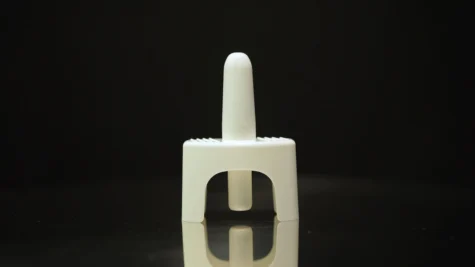The World Health Organization (WHO) estimates that 70% of people throughout the world will experience trauma during their lifetime. At such a high percentage, chances are that you or someone you care about has or will experience trauma. It also means that anyone who has experienced trauma is not alone.
There are several treatments for trauma, including Trauma-Focused Cognitive Behavioral Therapy (TF-CBT), talk therapy, and Eye Movement Desensitization and Reprocessing (EMDR) that involves tapping or back-and-forth movement to help the brain reprocess traumatic events and memories, reducing their emotional impact. This article is about understanding TRE (Trauma Release Exercises), an approach to trauma that began in the 1990s.
What is Trauma?
The Substance Abuse and Mental Health Services Administration (SAMHSA) defines trauma as “experiences that cause intense physical and psychological stress reactions.” Trauma can come from a single event, a series of events, or from circumstances that cause physically or emotionally harmful effects to someone, impacting their physical, social, or emotional health.
Of the 70% of people who will experience trauma, nearly 4% have experienced post traumatic stress-disorder (PTSD). While anyone can experience PTSD, those who have previously experienced trauma are more susceptible. Other contributing factors for PTSD include family history, age, education level, and gender (women are more likely to experience PTSD than men).
What is TRE (Trauma Release Exercises) and How Does it Work?
Dr. David Berceli created TRE to “help release the deep tension created in the body during a traumatic experience or through chronic stress.” TRE is a series of simple, physical movements designed to release deep muscular patterns of stress, tension, and trauma stored in the body. Dr. Berceli came up with the idea of TRE while working in natural disaster areas and countries experiencing war conflict worldwide. He noticed that many people shook or trembled during or after a traumatic event, which seemed to calm them down. In this podcast episode through the University of Arizona, he explained that “the natural state of the human organism…it tremors deliberately for a purpose. And the purpose [is] to somehow reduce the anxiety and the fear. But we train ourselves out of it as adults because of this negative narrative we have around it.” Dr. Berceli goes on to explain that TRE is about activating this natural tremor mechanism to reduce stress in the body.
The exercises used in TRE gently fatigue specific muscle groups, particularly in the legs and hips, to activate the natural tremor mechanism. These tremors originate from the psoas muscle, which plays a key role in the body’s fight-or-flight response. Dr. Berceli believes this area holds unconscious tension following trauma.
Benefits of TRE
According to the TRE website, there are numerous benefits of TRE, including:
- Less worry and anxiety
- Reduced symptoms of PTSD
- More energy and endurance
- Better sleep
- Less conflict in relationships
- Reduced muscle and back pain
- Greater emotional resiliency
- Relief from chronic medical conditions
Trauma Therapy Programs at Southern Sky Recovery
We understand that healing from addiction often means healing from trauma, so our programs work to address the deeper emotional pain that might be behind it. We believe in a trauma-informed approach to help clients explore their past and progress toward a brighter, healthier future. If you or a loved one are ready to move forward from the weight of trauma and addiction, we’re here to help. Recovery is possible. Reach out today and take your first step toward healing.
FAQs About TRE (Trauma Release Exercises)
Is TRE Safe for Everyone?
TRE is considered relatively safe for most people. If you have a history of severe trauma, complex PTSD, or other medical conditions, you should consult with a medical professional before trying it. The exercises are gentle, but everyone will experience them differently, even intensely. If possible, consider starting with a certified TRE provider.
Do I Need a Therapist to Practice TRE?
It is recommended that you start with a certified TRE provider, but you may not need a therapist or a TRE provider long-term. In the beginning, having a guide can be very helpful in understanding TRE and ensuring that you are doing the exercises correctly. Some people have found TRE helpful alongside talk therapy, so consider that a complementary approach.
What Does a Typical TRE Session Look Like?
TRE sessions usually begin with a series of exercises designed to activate and mildly fatigue the muscles in the legs and hips. They may be best performed on a yoga mat or similar. After the exercises, participants lie on a mat, usually on their back, and allow the body to shake or vibrate gently. Sessions end with a cool-down and time for rest or reflection. It is common for sessions to last anywhere from 30 to 60 minutes.
Can TRE Replace Therapy or Medication?
TRE is not meant to replace therapy or prescribed medication. It works as a complementary practice to release stress and trauma in the body in a way that talk therapy might not be able to.
Many people find that practicing TRE enhances their emotional resilience, improves their sleep, gives them more energy, reduces back pain, and supports their overall recovery, but it is not intended to replace medication or therapy.
How Often Should I Do TRE?
The frequency at which you practice TRE depends on a person’s individual needs, comfort level, and how it feels. Some people do it as often as 2 to 3 times per week if they are just beginning, or perhaps they find it helpful during times of high stress; others do it much less frequently and more for maintenance. TRE works best when you listen to your body. This is another reason that starting with a certified TRE provider might be a good idea–they can help you find the right cadence for your situation.
Please note the TRE website also lists this disclaimer: TRE® has not been evaluated by the US Food & Drug Administration or the American Medical Association. This technology is not intended to diagnose, treat, cure, or prevent any disease. Medical advice must only be obtained from a physician or qualified health practitioner. Results may vary between individuals. There are no guarantees, expressed, or implied.



